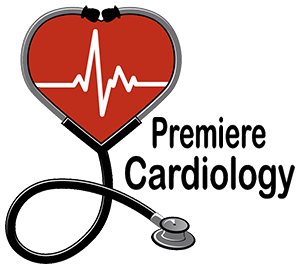Premiere Cardiology offers a complete range of diagnostic, therapeutic and management services for patients with heart disease. State-of-the-art facilities and equipment can be used to define whether cardiac problems are present, and to treat them when necessary. Noninvasive services, diagnostic and interventional catheterization procedures, and highly trained physicians underlie our commitment to excellence in cardiovascular medicine.

Services
Holter Monitoring
Holter monitoring is typically done to check an individual’s heart’s rhythm over a longer period of time (1-3 days). The Holter monitor is a recording device that can be worn. A diary of the day’s activities and any symptoms will assist the Cardiologist in determining if there is a rhythm problem. If the Holter monitor doesn’t reveal anything, the Cardiologist may recommend an Event Monitor where the patient can indicate and record specific times when symptoms may be occurring.
Electrocardiography (ECG or EKG)
If not done recently, an EKG is usually done. This is a simple test done to check the rhythm and rate of your heart. It can be done in the office and interpreted within minutes. It is often the first test done to determine if an individual is having a heart attack or rhythm disturbance.
Transesophogeal Echocardiography (TEE)
Ideal for examining the heart valves more closely, the TEE requires that a transducer be placed down the patient’s throat (the procedure is done with sedation) and into their esophagus (the connection between the mouth and stomach). A TEE may also be recommended if the traditional 2-Dimensional (2D) Echo is difficult to interpret. Used in conjunction with a Doppler echocardiogram (click here for more detailed information), blood flow can be checked as it passes through the heart and its valves but with greater detail than with the standard Transthoracic echocardiogram.


Dobutamine Stress Echocardiography
A dobutamine stress echocardiogram is a diagnostic procedure that may be used when a physician wants to assess the heart muscle under stress. If exercise on a treadmill is not an option (too much stress on the heart) due to a person’s medical condition, a physician may use an intravenous medication called dobutamine. Dobutamine causes the heart to beat faster and will mimic the effects of exercise on the heart. An echocardiogram is a noninvasive (the skin is not pierced) procedure used to assess the heart's function and structures. During the procedure, a transducer (like a microphone) sends out ultrasonic sound waves at a frequency too high to be heard. When the transducer is placed on the chest at certain locations and angles, the ultrasonic sound waves move through the skin and other body tissues to the heart tissues, where the waves bounce or ``echo`` off of the heart structures. The transducer picks up the reflected waves and sends them to a computer. The computer displays the echoes as images of the heart walls and valves.
Exercise Treadmill Testing
Exercise testing is a cardiovascular stress test that uses treadmill bicycle exercise with electrocardiography (ECG) and blood pressure monitoring. Exercise stress testing is currently used most frequently to estimate prognosis and determine functional capacity, to assess the probability and extent of coronary disease, and to assess the effects of therapy
Nuclear Stress Testing (exercise and pharmacological)
With this type of testing, a scan of the blood flow through the heart muscle is done usually at rest and with some sort of stress (exercise or chemical–in this case, adenosine). Much like the other stress tests described, if the individual is capable of walking, the test will be done with exercise; if not, by medication. A safe, radioactive substance like Technetium or Thallium is injected followed by camera images as the blood flows during rest and during stress. By comparing the images at rest to during stress, the blood flow can be determined to be normal, or obstructed by blockages. This type of testing is usually done before the more invasive angiogram and can be done in the office. Pharmacologic stress testing, established after exercise testing, is a diagnostic procedure in which cardiovascular stress induced by pharmacologic agents is demonstrated in patients with decreased functional capacity or in patients who cannot exercise. Pharmacologic stress testing is used in combination with imaging modalities such as radionuclide imaging and echocardiography

